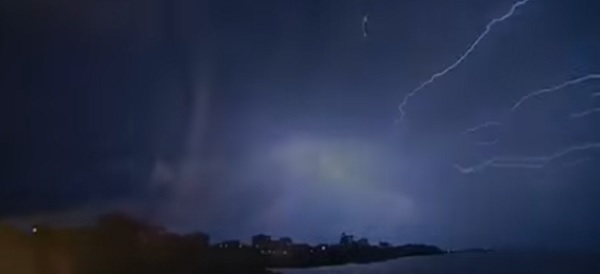By Jamie Nelson, | November 23, 2016

A rare thunderstorm in Melbourne has contributed to severe cases of asthma. (YouTube)
A rare phenomenon known as "Thunderstorm Asthma" claimed two lives in Melbourne, Australia, recently. Following a violent storm which hit the city recently, paramedics and hospitals were inundated with calls and patients who complained of suffering from a shortness of breath.
Like Us on Facebook
"It was extraordinarily busy, it was unprecedented," Mick Stephenson, Ambulance Victoria's executive director, emergency operations told the BBC. Furthermore, he said that while more than 200 calls were asthma-related, another 600 calls were respiratory-related emergency calls.
The asthma-related breathing problems were reportedly caused by an increased amount of grass pollen circulating in the air. The strong winds had whipped up the pollen into the air, carrying them hundreds of miles across the state.
The Victoria Ambulance service attended to more than a 1,000 calls during and after the storm. Following the severe storm, it was reported that more than 30 people were seeking treatment at intensive care units. The casualty figure reported after the storm was said to be more than six times the normal daily average.
The heavy casualty toll also affected waiting times. More than 60 reserve ambulances, fire fighters, and policemen were fielding calls and responding to the medical emergencies.
Among those claimed by the freak storm was a 20-year-old youngster, Hope Carnevali. The youth suffered a sudden attack of asthma and lay lifeless on her lawn for more than half-an-hour. Carnevali's family desperately tried to revive her by performing CPR, but their efforts were of little use as ambulances took a long time to arrive at the scene. Another casualty was Omar Moujalled, 18, who died while a doctor was attending to him.
The recent rye particle count of 102 in Melbourne following the storm was reportedly more than double and would be considered high on a normal day. The state's spring season has been wet and has affected people prone to hay fever and asthma.
Watch the video for more information:
-
Use of Coronavirus Pandemic Drones Raises Privacy Concerns: Drones Spread Fear, Local Officials Say

-
Coronavirus Hampers The Delivery Of Lockheed Martin F-35 Stealth Fighters For 2020

-
Instagram Speeds Up Plans to Add Account Memorialization Feature Due to COVID-19 Deaths

-
NASA: Perseverance Plans to Bring 'Mars Rock' to Earth in 2031

-
600 Dead And 3,000 In The Hospital as Iranians Believed Drinking High-Concentrations of Alcohol Can Cure The Coronavirus

-
600 Dead And 3,000 In The Hospital as Iranians Believed Drinking High-Concentrations of Alcohol Can Cure The Coronavirus

-
COVID-19: Doctors, Nurses Use Virtual Reality to Learn New Skills in Treating Coronavirus Patients











